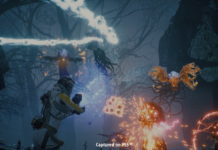Ok, I’ll make this quick.
Your name is Sumio Mundo. You’re a
searcher by trade. That means you look for things. If asked to find something,
you’ll find it. That’s what you do. You drive a Toyota Celica, a car only true
connoisseurs can appreciate. You’re in a hurry, too — no, you’re not desperate
for the can. You’re heading for a job at the Flower, Sun and Rain Hotel. They’ve
just hired you, see. And you have no idea why.
Confused already? You shouldn’t be.
We’ve only scratched the surface of Flower, Sun and Rain, a self-proclaimed
narrative of “murder and mystery in paradise” from the eccentric and unorthodox
games developer Goichi Suda. Originally released in 2001 on the PlayStation 2 in
Japan, Flower, Sun and Rain has been ported to the Nintendo DS and released to
North American shores for the first time courtesy niche games publisher XSEED
Games.
I know what you’re thinking, and you
have a good point — hy should you care about a weird Japanese game no one this
side of the Pacific has ever heard of? That’s a strong argument, and coupled
with the game’s incredibly lame title, you’ve built a pretty solid case.
Unfortunately for your dismissive view, however, you’ve forgotten the dude in
the Mexican wrestling mask.
He calls himself Suda 51, and he’s
become the gaming industry’s resident maniacal genius. He’s built a loyal
following of fans with 2005’s Killer 7 and 2008’s No More Heroes, two of the
most bizarre, jarring and stylistic games released in the last decade. Given the
inimitable quality of his work, it’s not surprising American fans have been
clamoring for Flower, Sun and Rain, a formative piece of Suda’s early work
released four years before Killer 7.
But don’t get too excited, captain.
Think about Mickey Mantle — the dude struck out 1,710 times in his career. Suda
is no Mickey Mantle, but if he’s had three big league at-bats, Flower, Sun and
Rain is his first strike out. He should’ve choked up a bit … Or, you know,
made the game fun to play.
There’s no denying the charm of
Flower, Sun and Rain. It captures a less-refined Suda yet to blossom into the
masterful developer he’d become, but throughout the experience, his style,
exuberance and instinct for storytelling are clear. His unorthodox tale develops
at the will of his bizarre characters, inhabitants of an iniquitous world in
which little, if anything, is sacred. But this isn’t a movie. Games differ from
other forms of media in that they engage consumers interactively. While Suda has
never struggled to create compelling stories and characters, he seems to have
had difficultly making the interactive process simple. No More Heroes was an
improvement over Killer 7 in that regard, but it still burdened players with
inconveniences — a maladroit overworld, the inability to instantly retry
missions — that created unnecessary walls between his wacky, brilliant worlds
and his players.
If he’s gotten better with time and
his recent works still suffer from these problems, you can imagine what Flower,
Sun and Rain has in store.
You won’t fire a bullet or impale a
single enemy in Flower, Sun and Rain, a contrast to his violent and
blood-drenched recent titles. Instead, the game is built around solving puzzles.
As Mr. Mundo, you’ll explore your surroundings until stumbling across specific
people, items or objects — interact with them, and you’ll trigger either a
puzzle or a conversation that furthers the story.
The premise is familiar, but the
execution is far from standard. See, Mundo travels with Catherine, a silver
briefcase able to plug into virtually any object or person he encounters.
Plugging in is like pushing a buzzer during a game show, providing Mundo the
opportunity to offer an answer to a given puzzle by inputting the correct
multi-digit numerical code into Catherine’s dial.
I know, it sounds completely
ludicrous, and in all honesty, it’s difficult to fully describe. It makes no
logical sense whatsoever, but somehow, it’s brilliant.
Yet as interesting as the concept
seems, particularly placed in the bizarre world Suda has created, the game’s
frustrating execution cripples it. Flower, Sun and Rain’s puzzles often seem
nonsensically random, exercises rooted more in arbitrariness than logic. In
fact, the answers to the puzzles are kept inside a 49-page guidebook inside
Catherine — the game seldom provides hints, so you’ll spend a lot of time
browsing this document for solutions. That’s 49 pages. If reading isn’t your
thing, this game won’t be, either.
Hypothetically, let’s say you’ve
stuck with it. You’ve found the answer, and you’re finally ready to give it a
try. Before plugging into the object, however, you’ll need to figure out which
of Catherine’s jacks fits into it. There are nine plugs of different colors and
shapes, and the game forces you to try each until, by totally random chance, one
of them happens to be the right fit. Now, for argument’s sake, let’s assume you
haven’t thrown your DS across the room. Let’s say you’ve read a few dozen pages
to find a solution, you’ve plugged in with the correct jack and you’re ready to
input your best guess. If your guess is wrong, there’s no option to retry —
you’ll have to plug back in, again hearing the lengthy speech Mundo gives before
using Catherine.
This is the same type of
inconvenient design that has flawed Suda’s more recent work, only it’s amplified
in Flower, Sun and Rain. The tragedy is that such issues — in this case,
masochistic puzzles and unfriendly game design decisions — can impede many
players from enjoying his remarkable art.
While these types of flaws resulted
in minor annoyances in Killer 7 and No More Heroes, they make Flower, Sun and
Rain extremely difficult to play.
Unfortunately, the game’s problems
only pile further. Mundo travels by foot, and while constant backtracking
between distant places can get wearisome quickly, it’s made more burdensome by
the game’s camera, which switches between fixed angles. It’s easy to lose your
sense of direction thanks to the shifting camera shots, which can make walking
itself a difficult process.
While style is the least of Flower,
Sun and Rain’s worries, the execution of that artistic vision is another issue.
Though it’s a port of a nearly decade-old PlayStation 2 game, one would expect
the game to look much better than it does on the Nintendo DS — the texture work
is horrid, ironically highlighted due to the game’s stylistic insistence on
fixed, cinematic camera angles.
The drab and low-polygon appearance
of the game’s 3D environments are contrasted by gorgeous 2D graphics and menus
that more effectively realize Suda’s unique style, but unfortunately, games
don’t take place in menus.
I’d love to see Suda take a crack at
that, though.
Albert Einstein was once a Swiss
patent clerk, and Bill Murray used to sell chestnuts outside grocery stores —
even the greatest of the great start from humble origins. Considering this, as
well as the game’s shocking originality and artistry, Flower, Sun and Rain
offers perhaps more than you’d expect from a game destined to be remembered as
Suda’s rookie effort, a story without a comparable match and an adventure
remarkable in its vision.
It’s just a shame there isn’t much
of a game in there.
Gameplay: 5.0
Only if we’re to claim a man who keeps score as he repeatedly drives his
head into a wall is playing a “game” can we grant the same for this title.
Graphics: 6.5
Flower, Sun and Rain teeters between two visual extremes. Its menus and 2D
graphics are gorgeous, dripping with Suda’s trademark style, but the 3D graphics
are mostly awful, marred by low polygon counts and bad textures.
Sound: 7.0
Though it’s a bit restricted by the limitations of the tinny DS speakers,
the music is excellent. Characters speak in Animal Crossing-style gibberish.
Difficulty: Hard
The game’s masochistic puzzles require lots of reading and little logic.
Concept: 8.5
An over-the-top and engrossing story conveyed by unique characters and
superbly written dialogue, Flower, Sun and Rain is prototypically Suda.
Overall: 6.0
Though flawed, Flower, Sun and Rain offers perhaps more than one would
expect from a game certain to be remembered as Suda’s rookie effort. The story
is shockingly original and fearless, and the game’s style is irrefutably Suda.
It’s just a shame there isn’t much of a game beneath all the ideas.












